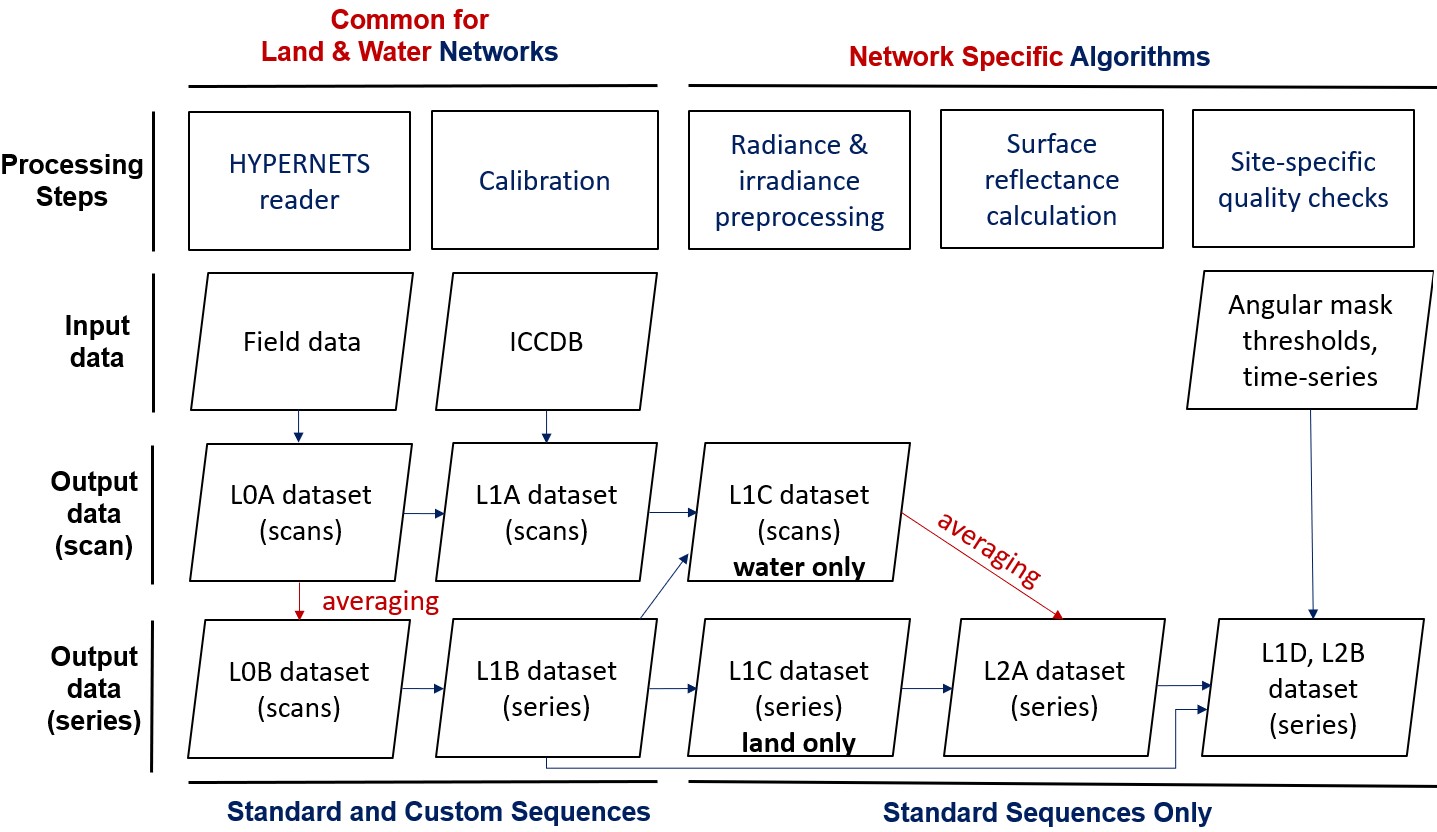Software Design
Introduction
The hypernets_processor module is a Python software package to process the Hypernets Land and Water Network in-situ hyperspectral data to surface reflectance products for distribution to users. This section describes the high-level design of this software.
The hypernets_processor has a number of different categories of usage or modes of operation, to provide context to the rest of the design they are initially described here. The first distinction is between the Land Network processor and the Water Network processor:
Land Network processor - processing for data taken by the Hypernets Land Network.
Water Network processor - processing for data taken by the Hypernets Water Network.
Also, there is a distinction between whether the measured data is from a standard measurement sequence or custom measurement sequence:
Standard Sequence - dataset containing the standard set of measurements defined by the Land or Water network.
Custom Sequence - dataset containing any other set of measurements.
Finally, there is the distinction between the two potential use cases, network processing or field use:
Network Processing - automated processing to prepare data retrieved from network sites for distribution to users
Field Use - ad-hoc processing of particular field acquisitions, for example for testing instrument operation in the field
In the main, the processing for each of these use cases will be fairly common, where there is a distinction this is highlighted in the design.
Processing Outline
The network processing is done centrally on the LANDHYPERNET and WATERHYPERNET servers, through a command line interface, which continuously checks for new data, and processes it as soon as it comes in. The hypernets_processor takes the data from acquisition (raw data) to application of calibration and quality controls, computation of correction factors (e.g. air-water interface reflectance correction for water processing), temporal interpolation to coincident timestamps, processing to surface reflectance and averaging per series. A diagram showing the design for the network processing is provided in the Figure below.

The inputs are the raw field acquisitions and the instrument characterisation and calibration database (ICCDB). The main outputs are the various L0A-L2B NetCDF datasets listed in HYPERNETS Product files. The HYPERNETS PROCESSOR also produces various plots and SQL databases of successfully processed products and anomalies (SQL Databases). The different processing steps and the plots produced are described in the next section. As part of the processing, quality checks are performed which either add quality flags to the produced data processing, or in some cases raise anomalies and halt the processing. These quality checks are described in Quality checks. Uncertainties are also propagated through each of the processing steps, as described in Uncertainty Propagation. Details on the produced products are provided in Hypernets Products specification.
Each of the file formats are described in a series of file format specification documents.
Command-Line Interface
The software will be run by the user through a command-line interface (CLI).
Module Structure
The module is structured following standard Python project layout conventions (e.g. this example), as follows:
hypernets_processor/
├── docs/
├── hypernets_processor/
| ├── cli/
| ├── data_io/
| ├── tests/
| ├── ...
| └── hypernets_processor.py
├── ...
└── setup.py
Where the top level hypernets_processor directory is the project directory, the sub-directory hypernets_processor is the package itself. Within the hypernets_processor package are scripts and subpackages, for example, here we see the cli subpackage (for the command-line interface code) or the data_io subpackage (that contains data readers and writers). Tests for packages and subpackages should go in a separate tests subpackage. Documentation (such as this Sphinx generated documentation) belongs in the docs directory. The setup.py script tells the installer how to install the package.